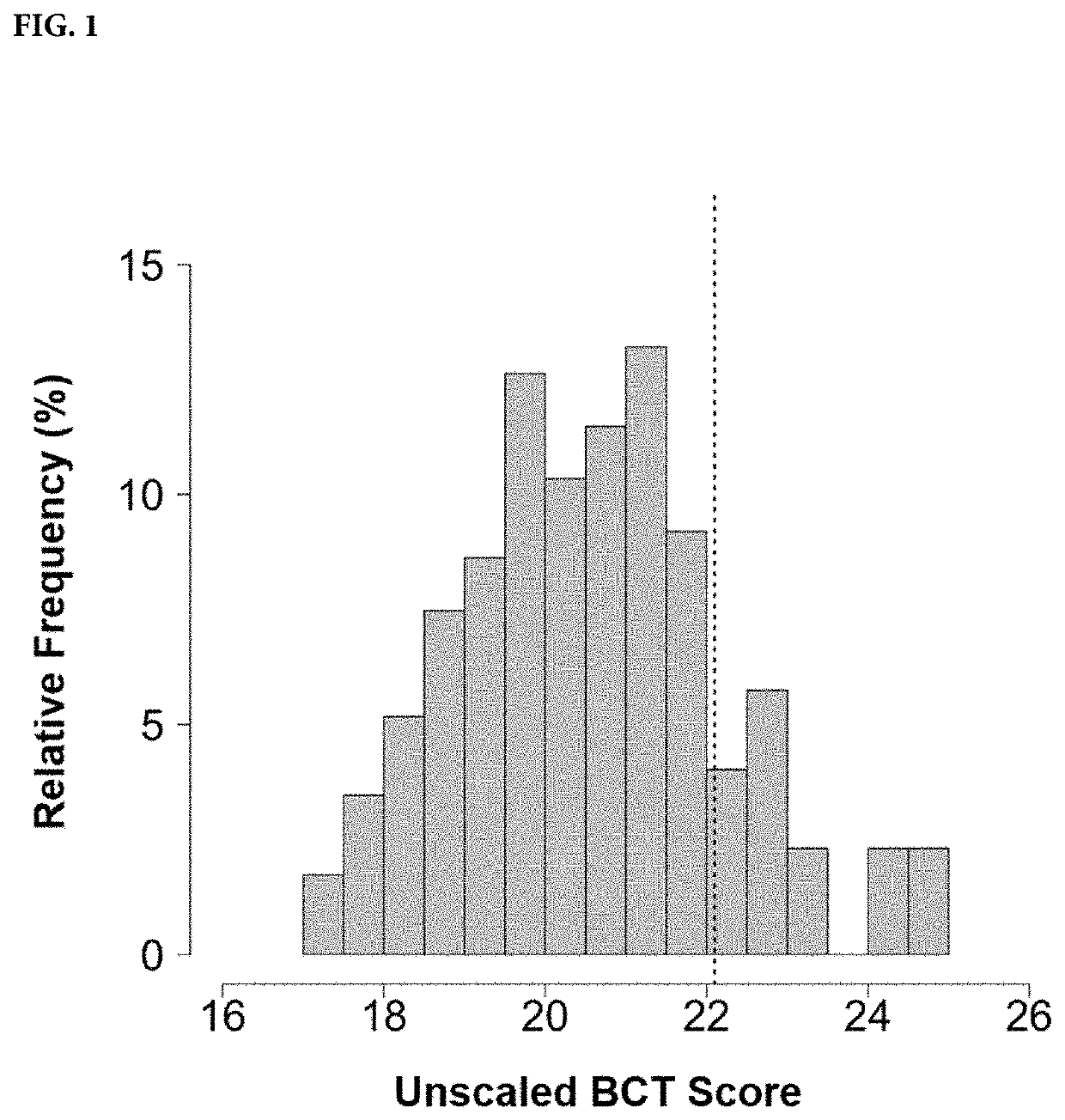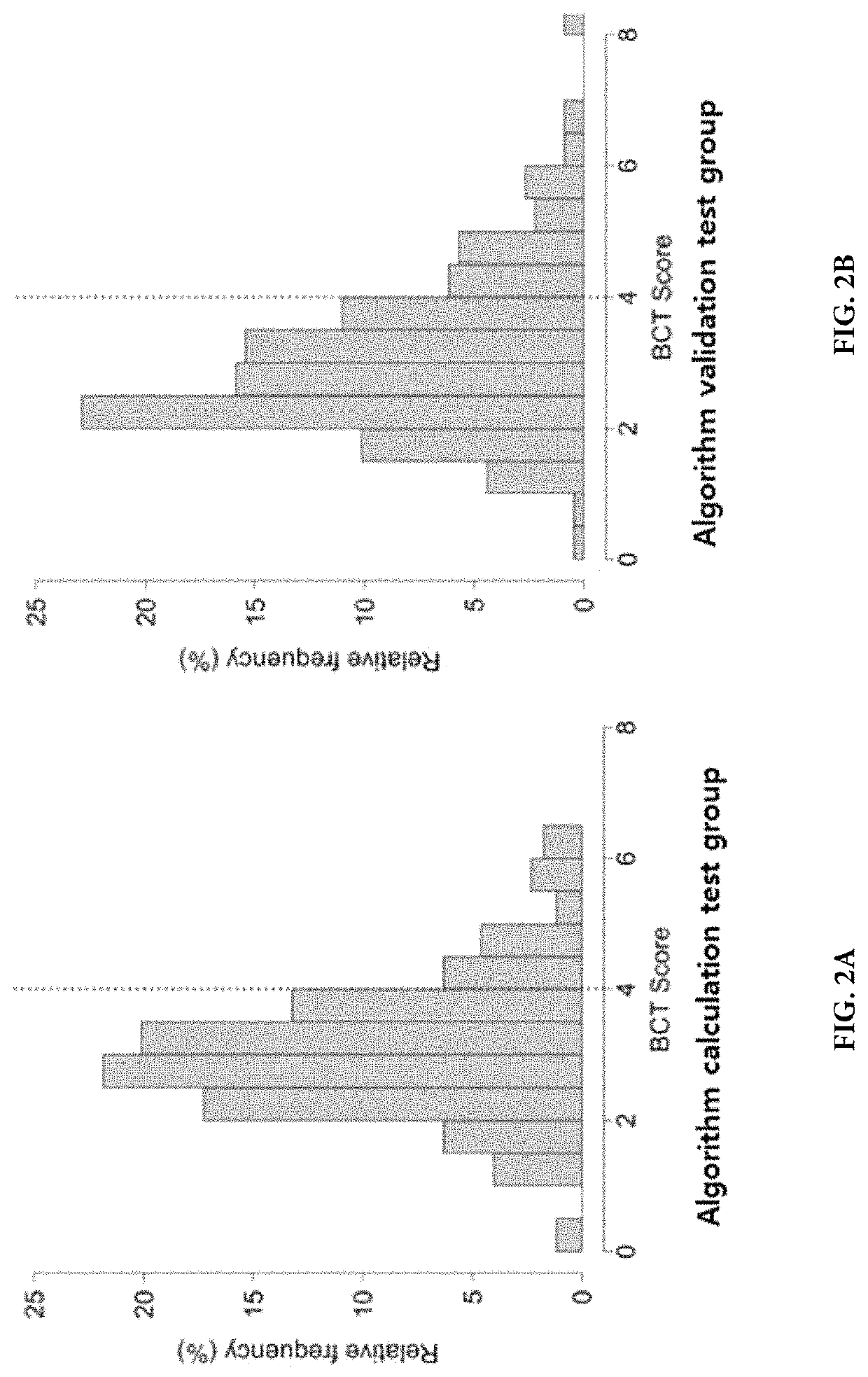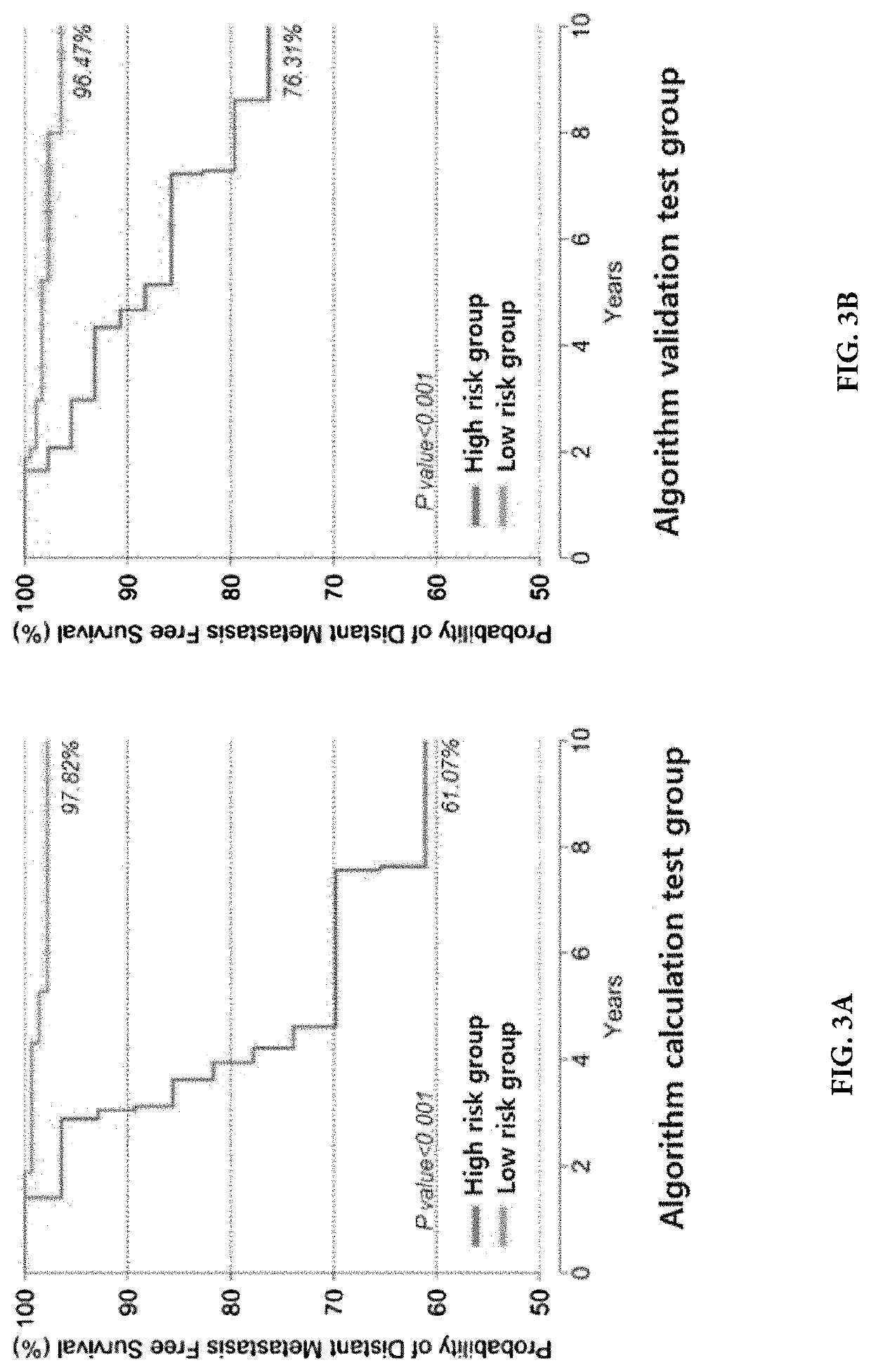Methods for predicting effectiveness of chemotherapy for a breast cancer patient
a breast cancer and patient technology, applied in the field of breast cancer patient effectiveness prediction, can solve the problems of increasing the risk of breast cancer, increasing side effects, and unsatisfactory treatment effect of patients, and achieve the effect of accurately predicting the effectiveness of chemotherapy
- Summary
- Abstract
- Description
- Claims
- Application Information
AI Technical Summary
Benefits of technology
Problems solved by technology
Method used
Image
Examples
example 1
Collection of Expression Profiles of Early Breast Cancer Tissues
[0143]NCBI's Gene Expression Omnibus (GEO, www.ncbi.nlm.nih.gov / geo) is a database site where researchers gather large-scale experimental data on gene expression and mutations, such as a microarray. The data on this site can be reanalyzed freely, and the process of deriving this prognostic gene also used data from this site.
[0144]The microarray data used in this study were limited to data using a microarray chip called ‘Affymetrix Human Genome U133A Array’.
[0145]There are about 22,000 probes on the chip, and each probe is a single gene. The degree of mRNA expression in most genes in the human body can be measured through the chip analysis.
[0146]In the NCBI GEO site, we examined microarray datasets for patients who were lymph node-negative patients and who were not treated with any chemotherapy after surgery. As a result, 684 specimen data from the following three datasets were obtained. The information on the sample dat...
example 2
[0149]According to the distribution of Distant-Metastasis-free survival (DMFS), patients without distant metastatic recurrence for more than 10 years were classified as ‘good prognosis group’ and those with distant metastatic recurrence within 5 years were classified as ‘bad prognosis group’. As a result of classifying the sample groups according to these classification criteria, it was classified that good prognosis group was 212 and bad prognosis group was 159. The mean DMFS was 13 years in the good prognosis group and 2.2 years in the poor prognosis group.
example 3
Selection of Gene for Predicting Prognosis
[0150]We examined the genes whose expression levels differed between the prognostic groups through SAM (Significant Analysis of Microarray) analysis on 212 samples with good prognosis and 159 samples with poor prognosis. Using the q-values of the SAM analysis results, we selected overexpressed genes in a good prognosis group and overexpressed genes in a poor prognosis group. The selected genes are combined into one set. As a result, a total of 302 non-redundant sets of genes were created, and a clustering analysis was performed by Principal Component Analysis (PCA) to determine the expression pattern of these genes. Gene Ontology (GO) function analysis was performed for each cluster in order to select the two major components and to explore the related biological functions for each major component,
[0151]The results of GO analysis showed that the main component 1 was concentrated in the proliferation and the main component 2 was concentrated ...
PUM
| Property | Measurement | Unit |
|---|---|---|
| time | aaaaa | aaaaa |
| size | aaaaa | aaaaa |
| color | aaaaa | aaaaa |
Abstract
Description
Claims
Application Information
 Login to View More
Login to View More - R&D
- Intellectual Property
- Life Sciences
- Materials
- Tech Scout
- Unparalleled Data Quality
- Higher Quality Content
- 60% Fewer Hallucinations
Browse by: Latest US Patents, China's latest patents, Technical Efficacy Thesaurus, Application Domain, Technology Topic, Popular Technical Reports.
© 2025 PatSnap. All rights reserved.Legal|Privacy policy|Modern Slavery Act Transparency Statement|Sitemap|About US| Contact US: help@patsnap.com



